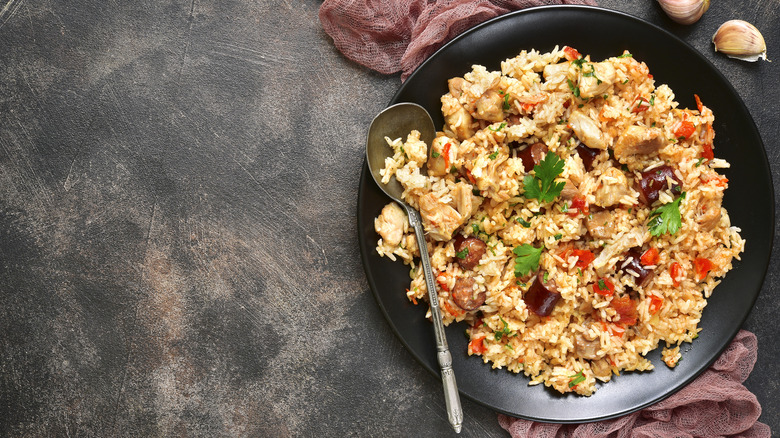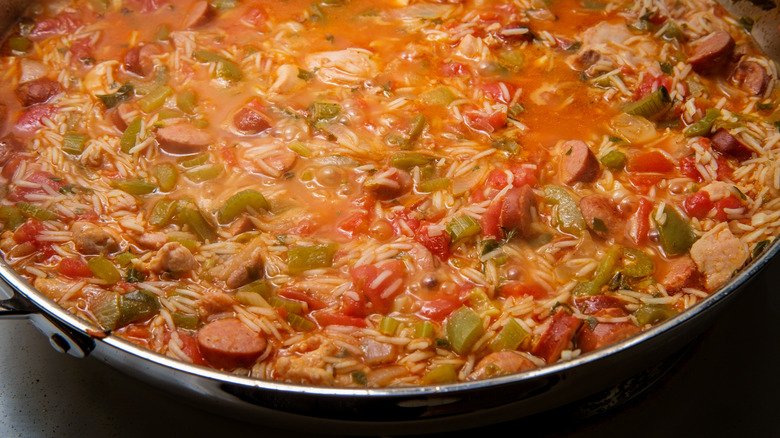The Reason Long-Grain Rice Is Essential For Jambalaya
There's something about one-pot dishes that can bring us relief by turning a bad day, or just one of those days, into a cozy night with a comforting bowl full of yum (with very little clean up afterwards). And when it comes to jambalaya, the warming flavor profile is unmistakable. The classic Louisiana dish, with its piquant combination of proteins, the holy trinity of veggies, and vibrant Cajun spices always hits the spot. But fluffy rice is what gives jambalaya its signature texture, and it's the key for making a dish that's perfectly balanced in every bite while still hearty and filling.
Long-grain rice is essential for your jambalaya recipe, ensuring a light and fluffy texture in your dish. This is because the variety contains less starch than other types, making the gains less sticky after cooking. That's how this rice manages to stay unattached and airy when cooked with other ingredients instead of becoming a clumpy mess.
Be sure to rinse your rice before cooking
Whether cooking a Creole or Cajun jambalaya, or a unique variation like this jambalaya with wild rice and sweet potatoes, there are some important tips to keep in mind when making this one-pot meal to ensure that your rice, and therefore your overall dish, turns out perfectly.
Rinsing the long-grain rice in a colander should always be the first step. This will remove the excess starch. Although long-grain rice does contain less starch than other varieties, rinsing it is more crucial than you might think because the rice grains rub together as they travel from their paddy of origin to their final destination, causing excess starch to cling to the outside. So be sure to rinse away until the water runs clear.
From there, the goal is to build the most flavorful cooking liquid possible for the rice to absorb each note from the other ingredients. Saute the proteins first to render fat that will flavor the vegetables, which go in second. Add in spices and the cooking liquid before stirring in the long-grain rice. Finally, bring everything to a simmer, lower the heat, and cover the pot. Just like with cooking rice on its own, covering it allows the rice to steam. But, please, with being so close to perfection, resist the urge to remove the lid and stir it. Giving into this temptation will make the rice break and become gummy.

